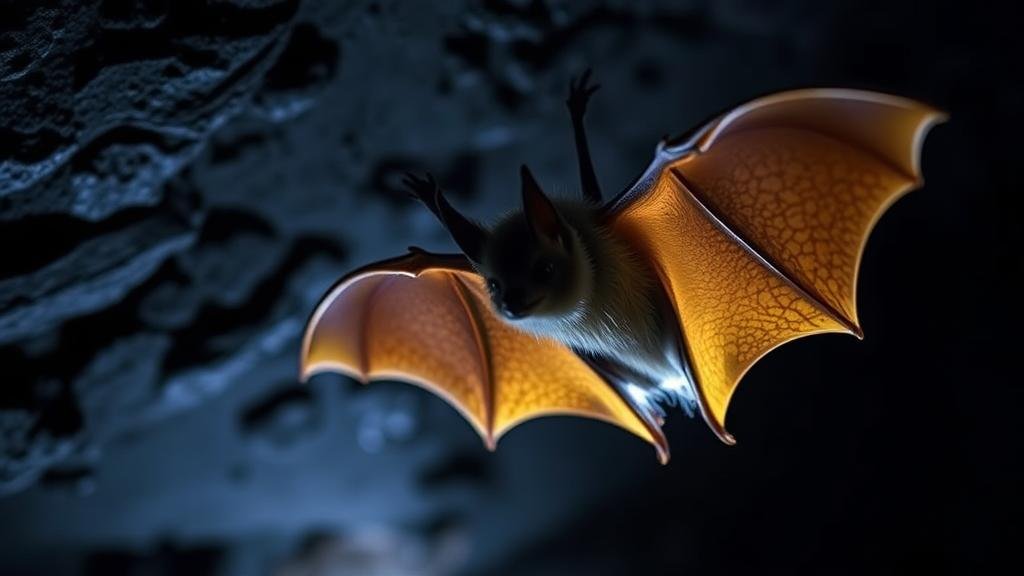Investigating the deep caves of the Congo for bioluminescent bats said to guide travelers through the dark.
Investigating the Deep Caves of the Congo for Bioluminescent Bats
The Congo Basin, a vast rainforest stretching across six countries in central Africa, is not only home to an astounding array of wildlife but also to some of the deepest and most mysterious caves on the planet. Among these natural wonders, a particularly intriguing species has captured the attention of researchers: bioluminescent bats. This article explores the phenomenon of these bats, their potential role in navigating dark environments, and the ongoing investigations to understand their biology and ecology.
The Enigmatic World of Bioluminescence
Bioluminescence is the ability of living organisms to produce light, and it is found in various species across the animal kingdom, including some fungi, deep-sea fish, and insects. mechanisms behind bioluminescence typically involve chemical reactions that produce light without heat. In the context of bats, this adaptive feature is believed to serve crucial ecological functions.
- Attracting mates: Light emissions can signal reproductive fitness.
- Repelling predators: Certain species may use bioluminescence as a warning.
- Navigation: Glows can lead others safely through dark environments.
Historical Background: Caves of the Congo
The Congo River Basin is one of the richest ecosystems on the planet, hosting approximately 10,000 species of vascular plants, 1,000 species of birds, and numerous mammals including the elusive bonobo and the rare forest elephant. The exploration of the regions caves began gaining momentum in the latter half of the 20th century, but the search for unique species like bioluminescent bats primarily stepped into the spotlight in the 2000s.
Notable cave systems, such as the Grotte de la Lian, located in the Republic of the Congo, have been studied for their unique geology and ecology. In 2006, researchers reported unusual luminescent fungi and mosses, sparking curiosity about potential bioluminescent fauna, including bats.
Importance of Bioluminescent Bats in Navigation
Traveling through dense forests and dark caves can be hazardous. Bioluminescent bats may provide a biological guide through such perilous environments. It is theorized that these bats could emit low-level light to help other bats or even forest creatures navigate their surroundings.
The analogy can be made to fireflies, which light up dark evenings in temperate regions, directing others toward safe paths. Similarly, bioluminescent bats could lead travelers through the intricacies of the dark Congolese caves, making their communities more resilient against navigation mishaps.
Current Research Efforts
As of 2023, several initiatives have been launched focusing on the Congo’s caves. Teams of biologists and ecologists from institutions like the Freiburg Institute of Advanced Studies have been conducting field studies to document the behavior and characteristics of bats inhabiting these caves. Noteworthy findings from preliminary research include:
- Observation of unique social structures among bat colonies.
- Preliminary genetic analysis indicating a potential new species.
- Reports of luminescence patterns that vary by species and habitat.
Challenges in Research
Researching the caves in the Congo comes with immense challenges. remoteness of the region, coupled with political and social complexities, can hinder access. Plus, the dense overgrowth and risk of tropical diseases can make conducting fieldwork perilous.
Also, there is an increasing need to balance ecological research with the needs of local communities who rely on the forest and caves for their livelihoods. Ensuring that conservation measures do not impede local practices is vital for sustainable cohabitation.
Actionable Takeaways
Understanding the role of bioluminescent bats in the Congo is not just an academic pursuit but also a significant conservation effort. Here are a few actionable takeaways for researchers, conservationists, and enthusiasts:
- Support local conservation initiatives to protect Cape biodiversity.
- Engage with indigenous communities to incorporate traditional ecological knowledge.
- Promote awareness about the significance of bats in ecosystems and their potential navigational roles.
As investigations continue, the secrets of the Congos deep caves continue to unfold, offering exciting prospects for the study of bioluminescent bats and the important role they may play in navigation within the dark realms of their habitat.



